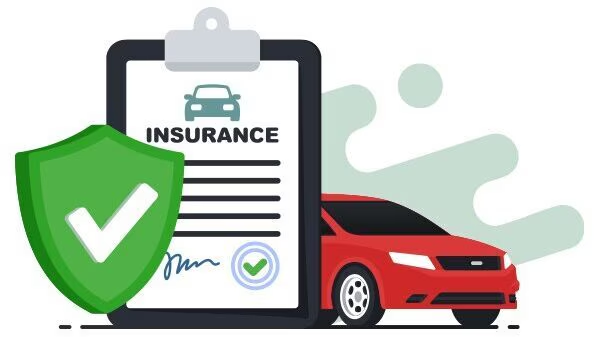Choosing the right car insurance policy isn’t just about picking the cheapest option—it’s about finding the best value. With so many providers, offers, and terms out there, it can feel overwhelming. But by knowing what to look for, you can confidently compare car insurance policies and make a smart, cost-effective choice that suits your lifestyle and driving habits.
Here are 10 clear and actionable ways to compare car insurance policies like a seasoned pro.
1. Understand the Types of Coverage Offered
Not all car insurance policies are created equal. Understanding the common types of coverage is essential:
-
Liability Coverage – Covers damage to others if you’re at fault.
-
Collision Coverage – Pays for damage to your vehicle from an accident.
-
Comprehensive Coverage – Covers non-collision damage like theft or weather events.
-
Personal Injury Protection (PIP) – Helps with medical expenses for you and passengers.
-
Uninsured/Underinsured Motorist Protection – Covers you if the other driver can’t.
Before comparing quotes, make sure you’re comparing similar types of coverage.
2. Evaluate Coverage Limits
Coverage limits refer to the maximum amount your insurer will pay after a claim. If you’re only comparing premiums, you might overlook a low-limit policy that leaves you underprotected.
Example: A $50,000 liability limit sounds high until you realize serious accidents can cost hundreds of thousands.
Pro tip: Always compare policies with the same or higher limits to ensure a fair comparison.
3. Check the Deductibles
A deductible is the amount you’ll pay out of pocket before your insurer covers the rest. Lower premiums often come with higher deductibles—and vice versa.
Ask yourself:
-
Can you afford a $1,000 deductible if you have an accident?
-
Would a higher premium now save you from a financial hit later?
Look at both premium vs. deductible trade-offs when comparing policies.
4. Consider Additional Benefits and Perks
Some insurers include extra features at no extra cost, while others charge for every add-on. Common perks include:
-
Roadside assistance
-
Rental car reimbursement
-
Accident forgiveness
-
Glass repair without deductible
-
Mobile app access or online claims
Make sure to read the fine print and see what each policy includes beyond the basics.
5. Compare Exclusions and Restrictions
Many policies contain exclusions—situations where coverage won’t apply. Common examples include:
-
Using your car for rideshare (Uber, Bolt) without special coverage
-
Driving in certain regions
-
Mechanical breakdowns
If you’re comparing two cheap policies, one might have hidden restrictions that the other doesn’t. Read the exclusions section carefully or ask the provider directly.
6. Check Insurer Reputation and Customer Service
A low price means little if your insurer is difficult to reach or slow to pay claims. Look at:
-
Customer reviews on sites like Trustpilot or ConsumerAffairs
-
Claim settlement ratings (some insurers are notoriously slow or complicated)
-
24/7 support availability
Also check their financial stability using ratings from AM Best, especially for long-term peace of mind.
7. Compare Discounts Available
Insurers often offer discounts that can lower your premium significantly. These may include:
-
Safe driver discount
-
Multi-car or multi-policy discount (bundling with home insurance)
-
Student discount
-
Anti-theft device discount
-
Telematics (usage-based driving) discount
When comparing policies, ask what discounts apply to you. Some insurers may offer more savings than others for the same level of coverage.
8. Use Reputable Comparison Websites
Instead of going insurer-by-insurer, use trusted comparison tools that allow you to compare multiple policies at once. Reputable sites include:
These tools allow you to filter by coverage types, deductibles, and insurer ratings—all in one place.
9. Read the Policy Documents Thoroughly
Even if you receive a summary or quote, the full policy document is where all the legal details are listed. Pay attention to:
-
Coverage limits and deductibles
-
Definitions of insured parties
-
How claims are processed
-
Time limits for reporting accidents
Don’t rely on just the salesperson’s explanation—always verify in writing.
10. Think Long-Term, Not Just Monthly
It’s tempting to pick the policy with the lowest monthly premium, but that can be a trap. Cheap policies might:
-
Have limited coverage
-
Raise premiums sharply after your first claim
-
Include hefty fees for cancellations or modifications
Instead, calculate the total annual cost, expected out-of-pocket costs in an accident, and future premium increases.
🔗 For a long-term savings mindset, check: MoneyGeek’s Guide to Saving on Car Insurance
Also Check:
- Home Insurance Explained: What’s Actually Covered?
- Travel Insurance Myths That Could Cost You Big
- Millennials Life Insurance: Planning Ahead in Your 20s and 30s
- Understanding natural disaster insurance: Are You Covered?
- Cyber Insurance: Protecting Your Digital Assets in the Modern Age
Final Thoughts
Comparing car insurance policies like a pro means going beyond price. It means understanding what you’re getting, what you’re not, and how the insurer will treat you when you need them most.
Use this checklist the next time you shop for car insurance:
✅ Compare coverage types
✅ Match coverage limits and deductibles
✅ Look for perks and exclusions
✅ Evaluate customer reviews
✅ Check for available discounts
✅ Use comparison tools wisely
✅ Read the fine print
By being informed and intentional, you won’t just save money—you’ll gain peace of mind every time you hit the road.
